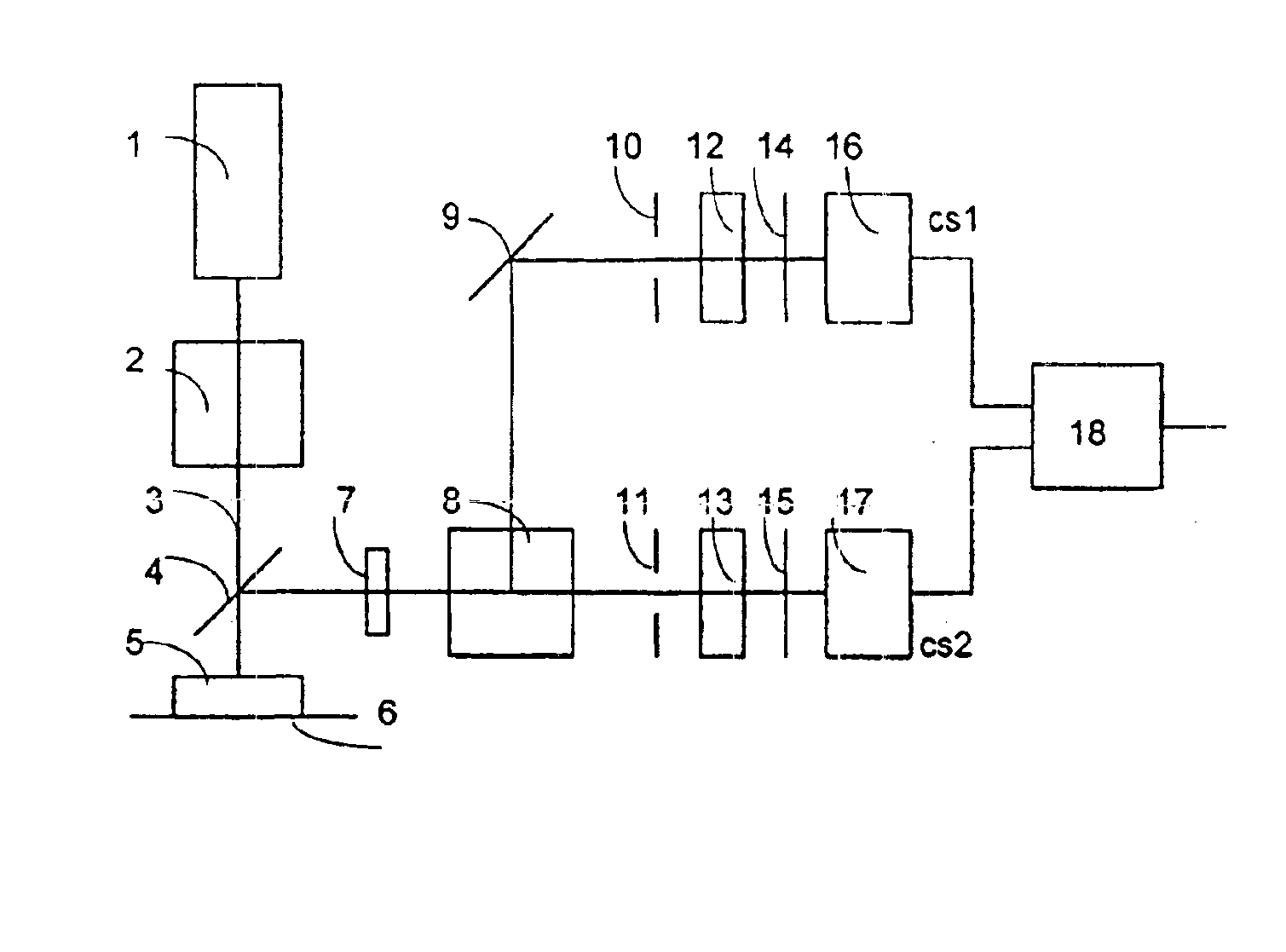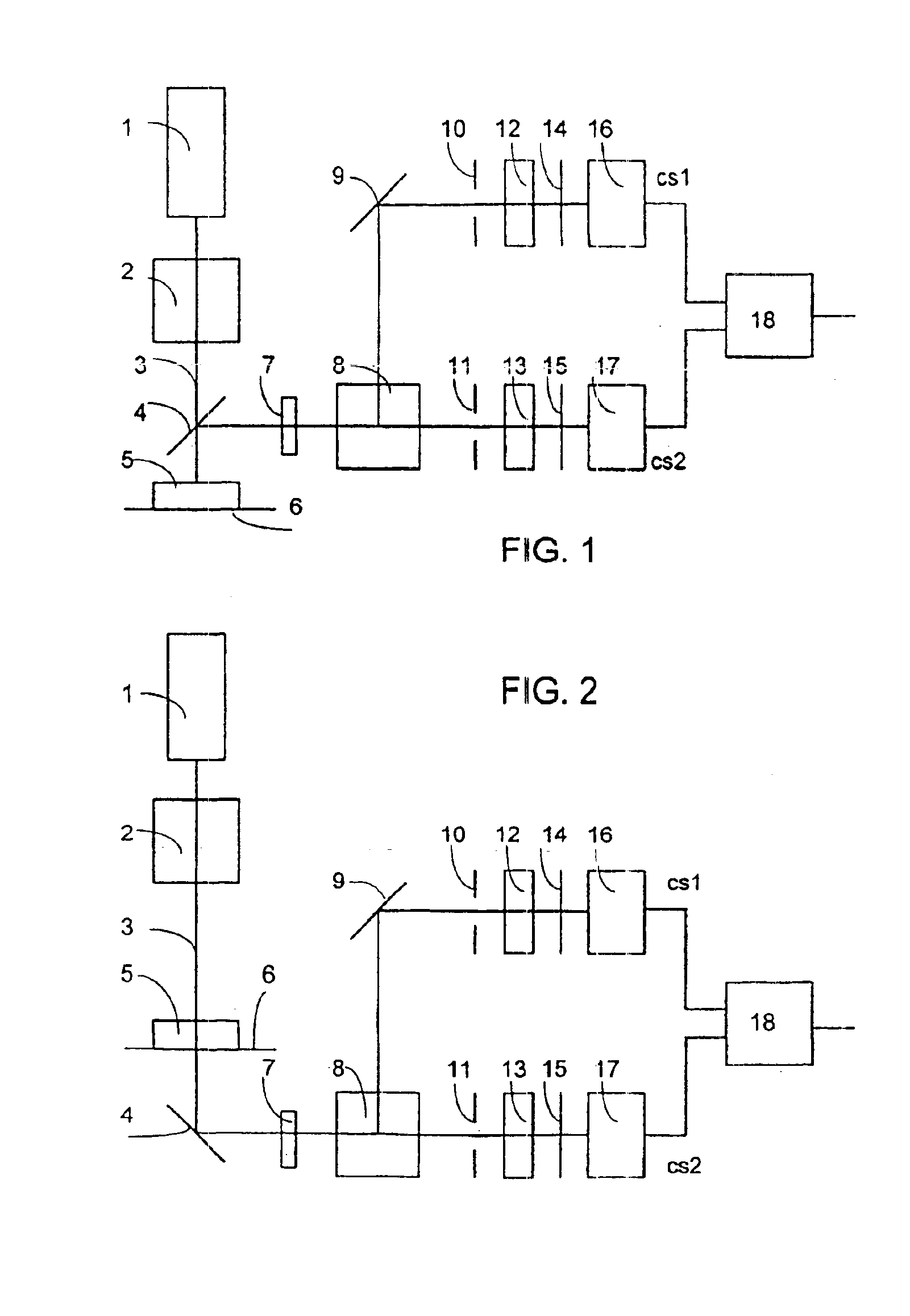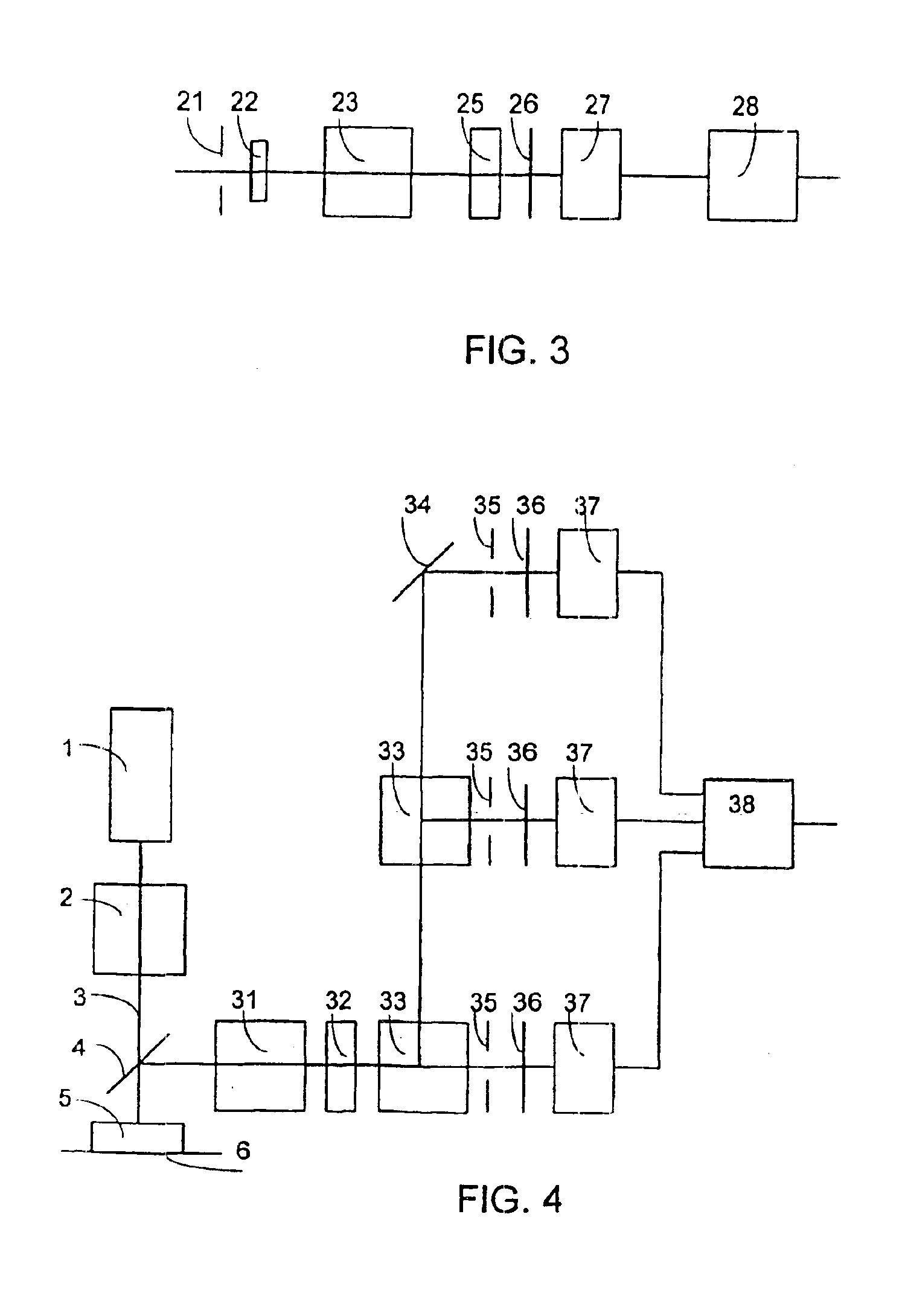Method and apparatus for determining the polarization properties of light emitted, reflected or transmitted by a material using a laser scanning microscope
a laser scanning microscope and polarization technology, applied in the direction of electrical devices, instruments, photoelectric discharge tubes, etc., can solve the problems of not providing satisfying, method does not provide any information on anisotropy and many other physical interactions of the sample, and the intensity variation of the illuminating laser light is not satisfying
- Summary
- Abstract
- Description
- Claims
- Application Information
AI Technical Summary
Benefits of technology
Problems solved by technology
Method used
Image
Examples
Embodiment Construction
FIG. 1 depicts a two channel configuration with a sample 5 on object table 6 which is illuminated with a laser light of laser light source 1 with the laser light routed through polarization state setting unit 2. The reflected light or the fluorescence are deflected by beam splitter 4 (for example semitransparent mirror). This way two light beams are generated by a second beam splitter 8. In both light beams there is a detector 16 and 17 producing an output signal proportional with the intensity of light which is input to signal processing units 18. In each of the channels cs1 and cs2 the intensity of only one polarization component is measured. A semitransparent mirror can be used as a beam splitter 8. In this case the entering light beam will be separated in a given proportion of the intensity. In one of the divided light beams a further mirror 9 may be placed for deflecting a selected light beam. Both of the divided (deflected) light beams contain all polarization components, ther...
PUM
 Login to View More
Login to View More Abstract
Description
Claims
Application Information
 Login to View More
Login to View More - R&D
- Intellectual Property
- Life Sciences
- Materials
- Tech Scout
- Unparalleled Data Quality
- Higher Quality Content
- 60% Fewer Hallucinations
Browse by: Latest US Patents, China's latest patents, Technical Efficacy Thesaurus, Application Domain, Technology Topic, Popular Technical Reports.
© 2025 PatSnap. All rights reserved.Legal|Privacy policy|Modern Slavery Act Transparency Statement|Sitemap|About US| Contact US: help@patsnap.com



